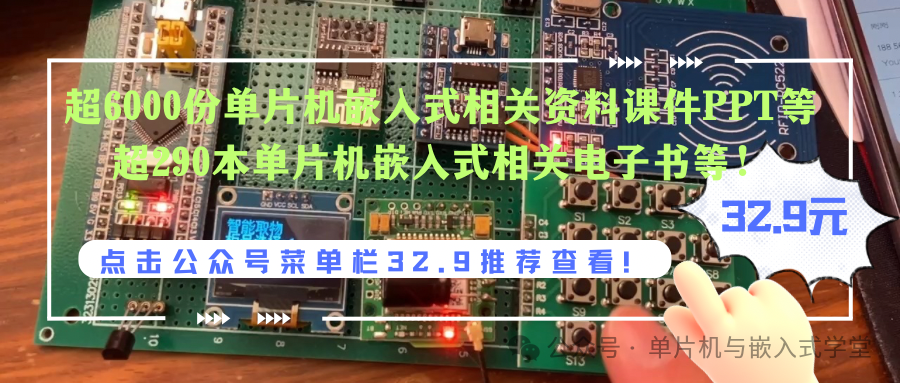

In recent years, with the gradual maturity of processes and IPs, the growth of 32-bit MCUs has been rapid, to the extent that 16-bit MCUs have been largely overlooked. Nowadays, when discussing embedded MCUs, it is either 8-bit or 32-bit, with very few 16-bit MCU product models available.
So what about the situation with 8-bit MCUs? Many embedded engineers have some misunderstandings, which we will analyze briefly below.
Embedded Column
1
8-bit MCUs are being phased out
This is the most common misunderstanding. First, let’s look at the facts: according to the latest Gartner market report, the market revenue and growth of 8-bit MCUs are only a few percentage points behind that of 32-bit MCUs. Considering that 8-bit chips are significantly cheaper than 32-bit chips, the shipment volume of 8-bit MCUs is actually much higher than that of 32-bit MCUs.
To put it intuitively, just because we have high-speed trains now, does that mean all traditional express and regular trains should be immediately phased out? Clearly, that is not the case, and there are many reasons for this. The reality is that the application fields of 8-bit MCUs cannot be directly replaced by 32-bit MCUs.
Embedded Column
2
8-bit processors lack innovationMany people think that since 32-bit MCUs are the darlings of the market, manufacturers must not be investing R&D resources in 8-bit products. Those who think this may picture the classic 8051 in a 40DIP package when they think of 8-bit MCUs. In fact, chip manufacturers have not stopped innovating.For example, the CIP-51 core has improved the performance of the 8051 at the same frequency by 12 times due to its design where one clock cycle equals one instruction cycle. Some domestic semiconductor manufacturers are also innovating based on the 8051 or other 8-bit cores.
Embedded Column
3
8-bit processors are difficult to program in C/C++If you understand the design principles of Arduino, this misunderstanding will be dispelled. To be honest, programming 8-bit MCUs in high-level languages is indeed more challenging than with 32-bit MCUs, mainly due to the lack of uniformity in memory addressing.For instance, the memory addresses of the 8051 core are divided into CODE, data, sfr, idata, and xdata. If banking is involved, it becomes even more complex, and 8-bit PICs have hardware stacks that are even more “non-mainstream” in design. However, these obstacles can be alleviated through tool optimization.
Embedded Column
4
8-bit processors are only for simple applicationsThis viewpoint has some truth, but embedded applications are mostly simple applications. The characteristics of embedded system applications determine that 8-bit MCUs still have many areas of application. The evolution of peripherals and compilers will gradually expand the application scope of 8-bit processors.
Embedded Column
5
8-bit processors cannot meet IoT application demandsIoT applications are not a single application but a composite application. Smartwatches, smart speakers, main controllers, and gateways certainly require complex processors to implement. However, IoT applications also include a large number of sensor nodes, execution nodes, and conversion nodes. Using low-power 8-bit processors for these nodes is more suitable.
Embedded Column
6
8-bit processors are slow to respondThis is a complete misunderstanding. In typical embedded applications, response speed is mainly related to interrupt response and wake-up delay. 8-bit processors have inherent advantages (less address translation workload, fewer gates for IP unit implementation) and are not inferior to 32-bit processors.
Embedded Column
7
8-bit processors have lower energy efficiency than 32-bit processorsI once read a book by an authoritative engineer from ARM, which stated that the energy efficiency of 32-bit processors is higher than that of 8-bit MCUs, because 32-bit processors can complete tasks quickly, resulting in a larger proportion of sleep time. However, this conclusion contains an assumption that the tasks have a certain complexity. If the tasks themselves are very simple, and the power consumption during the wake-up process is also significant, then this assumption does not hold.For different application scenarios, it cannot be simply stated which has higher energy efficiency, 8-bit or 32-bit. At least in very simple applications, the energy efficiency of 8-bit processors is higher. If we add tasks that respond independently without CPU intervention, the energy efficiency of 8-bit processors can even be much higher.
Embedded Column
8
32-bit processors with the same price have far superior functions to 8-bit processorsThis also has a certain degree of credibility, but do not forget that a significant portion of applications using 8-bit MCUs are sufficient. In such cases, if one insists on purchasing a 32-bit MCU with a higher average price, costs will increase. For many embedded products that are basically standardized, 8-bit MCUs still have a certain cost advantage.
Embedded Column
9
Applications designed for 8-bit processors cannot adapt to future changesThis is a matter of perspective. As embedded programmers, we should focus more on the current tasks. Regardless of the type of MCU, if the product form changes or the requirements themselves change, redesign is necessary. The future is uncertain for everyone, so why consider so many forward-looking aspects that have no practical significance?
Embedded Column
10
Development work for 8-bit processors is more burdensome and lacks an upgrade path32-bit processors are more software-centric, allowing for more code reuse. In contrast, 8-bit processors rely more on hardware peripherals to complete tasks. Overall, there is no absolute difference.As long as it is an embedded processor, the upgrade path is not very clear. If you use manufacturers that have both 8-bit and 32-bit products, you will find that many peripherals are quite similar. Considering the current trend of graphical configuration of peripherals, the upgrade path is gradually becoming less important, as it is all about generating basic driver code through graphical or scripted means.

Screenshots of some electronic books
 【Complete Set of Hardware Learning Materials Collection】
【Complete Set of Hardware Learning Materials Collection】
